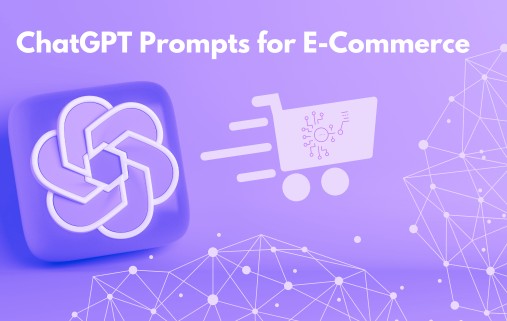Best Selling Products
E-Commerce in the Age of AI: How ChatGPT is Changing the Rules of the Game?
Nội dung
Leaked information from OpenAI's source code reveals a new feature that allows users to browse products, ask for information, view reviews, and click "Buy Now" all right within the chat window with ChatGPT.

The tech and e-commerce community is buzzing with the news that OpenAI and Shopify are teaming up to integrate live shopping into ChatGPT. This is not just a new update, but could be a major turning point in the evolution of e-commerce, when AI is no longer just a responder, but starts to become a true… virtual salesperson. So what does this mean for consumers and businesses? And what should brands do to avoid being left behind?
1. The “Big Gamble” Between OpenAI and Shopify
Leaked OpenAI source code reveals a new feature that allows users to browse products, ask for information, read reviews, and click “Buy Now” all within the chat window with ChatGPT. They even found code snippets like “buy_now,” “shopify_checkout_url,” and fields for pricing, shipping, and more. This suggests that ChatGPT is about to get a true e-commerce feature, where users can complete the entire purchase process without leaving the conversation.
For example, if you ask “what is the best slow juicer under $100?”, ChatGPT might return a list of suggestions with photos, reviews, and a “Buy Now” button. When you click that button, you’re taken to Shopify’s checkout process, all within the chat window.
With the support of Shopify, one of the most popular e-commerce systems in the world, OpenAI is showing a very clear ambition: to turn ChatGPT from an intelligent chatbot into a “virtual store” serving 24/7 for millions of global users.
.png)
2. How will ChatGPT change shopping behavior?
In the long term, the combination of ChatGPT and Shopify promises to reshape the entire online shopping journey. Instead of going through multiple separate steps such as searching – comparing – adding to cart – paying, users can now complete the entire process in just one conversation with AI.
For example, when a user types in a purchase request, ChatGPT will return a list of products with a brief description, star rating, and price. The buyer can continue to ask detailed questions (e.g. “Does this product have a warranty?”, “Is it suitable for winter?”) and receive instant, personalized answers. Finally, by simply clicking “Buy Now,” the customer completes the transaction right in the chat window. Every step from searching, comparing, to paying is seamless.
This takes the online shopping experience to a new level. Instead of switching between multiple pages, consumers only operate in a single space. The speed and convenience of shopping via ChatGPT are highly expected. This AI assistant truly becomes a 24/7 “virtual salesperson”, always ready to advise and support all transactions.
For brands and sellers, this shopping channel opens up new opportunities for engagement. They will have the opportunity to reach millions of ChatGPT users around the world. ChatGPT engagement data can show shopping behavior while customers are still chatting, helping to optimize marketing and make more accurate product recommendations. And if ChatGPT becomes a popular tool, brands can see it as a new performance marketing channel, attracting consumers who are ready to buy immediately. However, this also poses a new challenge: how to be “present” in AI conversations, instead of just sitting in search rankings?
.png)
But this convenience poses a new challenge for brands: the traditional SEO game may no longer be central. Instead, brands need to shift to a strategy of “agent optimization” — ensuring their products are always present at the right time and place in AI-driven interactions. This could be the next generation “display race” in the era of conversational commerce.
3. The Impact of Gen AI on E-commerce
Generative AI is transforming the e-commerce industry. Instead of simply displaying products, AI platforms like ChatGPT can deeply personalize the shopping experience for each user. For example, AI can aggregate customer shopping data and browsing habits (favorite colors, brands, times of purchase, etc.) to make hyper-personalized recommendations.
AI also helps optimize logistics and marketing. AI systems can analyze inventory data, forecast demand, and automatically adjust inventory; thereby reducing “out of stock” or “overstock” situations more effectively. McKinsey estimates that AI can reduce raw material costs by 5% thanks to more accurate forecasting. Automated marketing campaigns powered by AI (such as sending personalized emails, running ads to the right customer groups, optimizing dynamic pricing) increase conversions at a more optimal cost.
However, generative AI also brings with it significant challenges. According to Shopify, the biggest issues include data bias, data quality and consistency, and high implementation costs. AI is only effective when it is fed with good data: incomplete, outdated, or biased data will lead to incorrect recommendations and even loss of user trust. In addition, implementing AI technology requires investment in infrastructure, software, and human resource training, which is a major barrier for many small businesses. Experts also note the issue of personal information security and AI ethics: if the data collection system is not controlled, it can violate data protection regulations (GDPR, CCPA, etc.) or unintentionally perpetuate negative biases in historical data.
.png)
4. How should brands prepare for the new era?
To avoid being left behind, brands and retailers need to proactively adapt to the AI trend. First, standardize and enrich customer data. Data platforms and management systems (CRM, ERP, etc.) should be integrated to build a common data model and a comprehensive view of customers (360° customer view) so that AI can analyze accurately. Through this, businesses will better understand user behavior and effectively personalize the experience. AI tools can help automate this data processing, but the input data source must be of high quality.
Second, businesses should leverage AI to create content and optimize marketing. Many recurring content tasks, such as writing product descriptions, social media posts, or marketing emails, can be prototyped using ChatGPT and similar tools, then edited to match the brand’s style. Shopify encourages the use of AI marketing tools to simplify the creative process from writing content to designing ad images. For example, AI can target specific customer groups and automatically adjust messages based on feedback, helping to increase ad campaign performance. At the same time, carefully test and measure traditional metrics alongside new metrics (such as AI visitor conversion rates, revenue from chat channels) to optimize advertising budgets.
.png)
Finally, focus on improving the customer experience. With AI chatbots and new virtual assistants, businesses should consider integrating chatbots to provide 24/7 support, automatically answer frequently asked questions, and guide customers to purchase. For example, The Conran Shop brand used Shopify POS to combine multiple sales channels and reduced operating costs by 50% and increased conversion rates by 54%. Moving to a unified commerce platform allows AI tools to “see” the entire process from purchase history to inventory levels to make timely recommendations and improve service. According to Shopify, the most successful retailers will “embrace AI strategically, focusing on solutions that bring real value to their business and customers.” ChatGPT is about to become more than just a smart search engine, but also a “virtual supermarket” where you can chat anytime. With its partnership with Shopify, OpenAI is ushering in a new era of e-commerce, where every step from discovery to checkout is wrapped up in a single conversation.
In short, the partnership between OpenAI and Shopify could usher in a bold new chapter for the world of AI-powered shopping. When the entire experience of researching a product, checking prices, reading reviews, and clicking the “Buy Now” button is integrated directly into the conversational interface with ChatGPT, the way we shop online will change forever. No more jumping between multiple websites, it all happens seamlessly in a natural conversation.
To avoid being left behind, brands need to act quickly. This includes investing heavily in data quality, leveraging the creative power and automation of AI, and adjusting marketing strategies to suit the new era. Not only will these preparations help improve business efficiency, they will also provide consumers with a more convenient and personalized shopping experience that is literally “consulting and closing the deal in one question”.












































